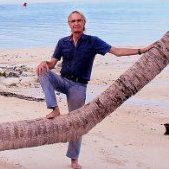Five Dead As Philippine Volcano Spews Ash, Rocks
-
Recently Browsing 0 members
- No registered users viewing this page.
-
Topics
-
-
Popular Contributors
-
-
Latest posts...
-
1,753
5 year multiple entry DTV visa (Destination Thailand) from 2024-xx-xx
Yes, if coming from a country where wages are lower than Thailand, working illegally could be a valid concern. The idea that Westerners are coming here to work "under the table" (illegally) for less than McDonalds pays back home is ridiculous, though. -
44
USA Trump Imposes Stealth Tariffs Up to 25% on UK Products
but I thought they had a deal at 10%.... confirmation nobody can/should trust Trump -
160
The slow moving coup in the USA
Why are you so fixated on his manhood? Do you dream it having it in your mouth? -
11
Koh Samui Immigration - Transferring visa/extension stamps to new passport
I got my visa-, entry- and retirement extension-stamps moved from old to new passport today; i.e., I picked up my new passport at Samui Immigration today. I needed to fill in a form on gthe ground floor, which I had to queue up to get from the counter, and then back in queue-line to show form and signed photocopies of name-page and all stamped pages in old passport, together with copy of the new passport's name-page and original letter from my country's embassy in Bangkok – I don't think the affidavit is a demand any more – whereafter I got a queue-number and went upstairs, where my number was called immediately, and passports and photo copies given to a man at the counter. This was done 10 days ago; so, that's about how long time you shall expect that kind of service to take. The great news is that they didn't charge a single baht, nor satang, for the service; last time, 9 years ago, I paid 500 baht...👍 -
92
Bangkok Bank - No yellow book, no new account
Is there nobody with a minimum of common sense to consider the ownership of property as sufficient justification to have a bank account or a sim card and stop all the absurd hassles ? Many home-condo owners on freehold or lease hold do not live full time with a visa. They only come for a few months in winter and then go back. These people spend big in the coutry. Could be think that there is some racist dogma that want's the falang money but not the have the falang stay over full time or even short time without being harassed on a reguar basis ? Of course not, that would not be the case !! As send before, if you can, sell and leave. Other neighbouring Asian countries are far more respectful towards foreigners and make life easier. And to take it further, consider places like Spain or Malta where cost of living is soon same as to the high price hikes of Thailand. -
61
Report Dream Crushed: British Expats’ Thai Retirement Nightmare
Fine tuned with years of experience. He didn’t stand a chance
-
-
Popular in The Pub









Recommended Posts
Create an account or sign in to comment
You need to be a member in order to leave a comment
Create an account
Sign up for a new account in our community. It's easy!
Register a new accountSign in
Already have an account? Sign in here.
Sign In Now